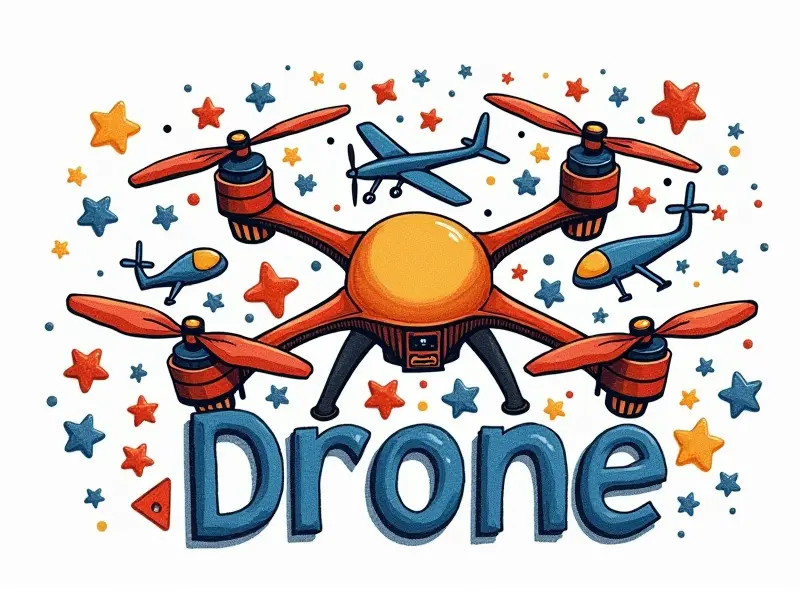How do I fly FPV safely?

How Do I Fly FPV Safly?
Mastering Safe FPV Flight Techniques
Flying a drone in first-person view (FPV) can be an exhilarating experience, but it also comes with significant risks. To ensure your safety and the safety of others, mastering safe FPV flight techniques is essential. Start by familiarizing yourself with basic drone controls and gradually move on to more advanced maneuvers.
Practice in a controlled environment before venturing out into public spaces or areas with high foot traffic. Always maintain visual line-of-sight (VLOS) when learning new skills, which helps you stay aware of your surroundings and avoid obstacles.
Essential Safety Tips for FPV Flying
Before taking off on an FPV flight, there are several safety tips to keep in mind:
- Check Your Gear: Ensure all components of your drone and goggles are functioning properly. Test the camera feed, signal strength, and battery levels before each flight.
- Wear Protective Gear: Use a helmet with an integrated FPV screen or mount one securely to avoid neck strain and eye fatigue during long flights.
- Avoid Obstacles: Be cautious of trees, power lines, buildings, and other potential hazards. Always maintain a safe distance from people and animals.
Top 5 Safety Rules for FPV Pilots
To minimize risks while flying in first-person view, follow these top five safety rules:
- Know Your Limits: Only attempt maneuvers within your skill level and comfort zone.
- Stay Informed About Regulations: Familiarize yourself with local laws and regulations governing drone use in different areas.
- Use a Buddy System: Fly with an experienced pilot who can provide guidance and assistance if needed.
- Carry Emergency Supplies: Bring spare batteries, tools for quick repairs, and first aid kits to address any unexpected issues.
- Respect Privacy: Avoid flying over private property without permission and be mindful of noise levels that could disturb nearby residents.
Avoiding Common Risks in FPV Drone Flying
Flying a drone in first-person view presents several common risks, including:
- Camera Lag: The delay between your movements and what you see on the screen can cause accidents if not managed properly.
- Battery Failure: Running out of power mid-flight can lead to loss of control or even a crash landing.
- Signal Interference: Weak signals from your transmitter can result in erratic drone behavior, making it difficult to maintain control.
FPV Flight Safety: Protect Yourself and Others
Safety should always be the top priority when flying FPV drones. Here are some ways to protect yourself and others:
- Wear Protective Gear: Use a helmet with an integrated FPV screen or mount one securely.
- Avoid Crowded Areas: Stay away from parks, beaches, and other places where people gather to prevent accidents.
- Inform Others About Your Flight: Let nearby residents know about your planned flight so they can take precautions if necessary.
Safe FPV Flying: Rules Every Pilot Should Know
To ensure safe and responsible FPV flying, every pilot should adhere to the following rules:
- Maintain Visual Line-of-Sight (VLOS): Keep your drone within sight at all times.
- Avoid Flying Over People: Do not fly over crowds or individuals unless it is necessary for a specific purpose and with proper authorization.
- Respect No-Fly Zones: Stay clear of airports, military bases, and other restricted areas.
Ensuring Safety While Enjoying FPV Drone Racing
If you participate in FPV drone racing events, safety is paramount. Here are some tips to ensure a safe and enjoyable experience:
- Use Proper Gear: Wear protective headgear and goggles designed for high-speed flights.
- Follow Course Rules: Adhere to the rules set by race organizers, including speed limits and designated flight paths.
- Practice Pre-Race Checks: Conduct thorough pre-race inspections of your equipment to prevent malfunctions during competition.
Emergency Protocols for FPV Drone Pilots
In case of an emergency, having a clear set of protocols can help you respond quickly and effectively. Here are some essential steps:
- Power Off Immediately: If your drone starts behaving erratically or loses signal, power it off as soon as possible.
- Contact Authorities: Report any accidents or incidents to local authorities immediately.
- Assess Damage: After an incident, assess the damage to both your drone and surroundings before attempting repairs.
Understanding FPV Camera Lag and Its Risks
The delay between your movements and what you see on the screen (camera lag) can be a significant risk factor in FPV flying. To mitigate this:
- Practice with Low-Lag Settings: Use settings that minimize latency during practice sessions.
- Test in Controlled Environments: Practice in open areas where you can easily recover from mistakes without causing harm.
Best Practices for Indoor FPV Flying
Flying indoors presents unique challenges and opportunities. Here are some best practices to follow:
- Choose Appropriate Locations: Opt for large, open spaces with minimal obstacles like gymnasiums or warehouses.
- Use Low-Speed Settings: Adjust your drone's speed settings to match the indoor environment and prevent collisions.
Legal Considerations for FPV Drone Pilots
Familiarize yourself with local laws and regulations governing drone use. Key considerations include:
- Airspace Regulations: Know which areas are off-limits to drones.
- No-Fly Zones: Avoid flying over sensitive locations like airports, military bases, or government buildings.
Conclusion
Flying FPV safely requires a combination of technical knowledge, situational awareness, and adherence to best practices. By mastering safe flight techniques, following essential safety tips, and understanding legal considerations, you can enjoy the thrill of FPV flying while minimizing risks for yourself and others.

